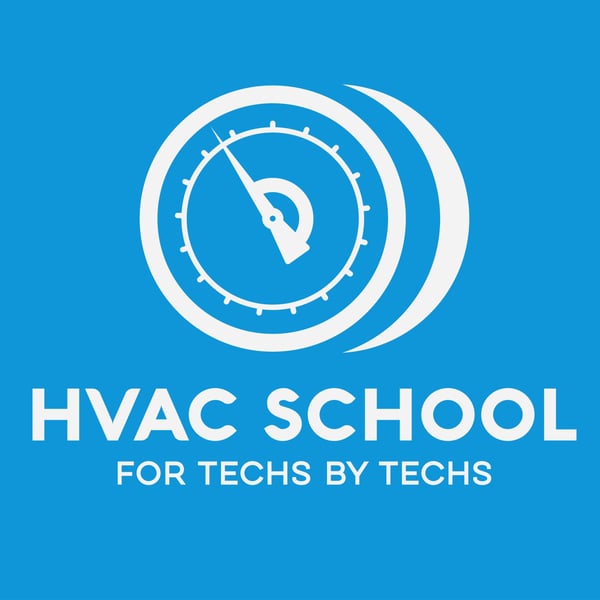Short #5 - Wire Routing & Connection
HVAC School - For Techs, By Techs
Bryan Orr
4.8 • 985 Ratings
🗓️ 27 March 2018
⏱️ 24 minutes
🧾️ Download transcript
Summary
In this short podcast episode, Bryan covers some basic best practices for wire routing and wire connections in HVAC work.
When it comes to electrical work of any kind, the wires must have proper protection. For example, the wires must be in the proper conduits. They must also work on appliances that they are rated for. HVAC technicians must also understand their qualifications against local codes to ensure they have been authorized for electrical work.
You also NEVER want to route the wire through an opening you can't shove your finger through. If you can cut your finger on an opening, then that opening will probably cut the wire. If you need to run a wire through one of those difficult places, use a grommet. In any case, make sure you properly strap the wire, such as with zip ties. Do NOT trim wires to make them fit a connection.
When routing wire, you WILL be making connections inside the appliance. Make sure you know your connectors and their ratings to make the best, safest connections possible. Check if there is any tension at the connections and disconnects; if there is tension AGAINST the terminal, check your wire angles and adjust them until they sit still or have a little tension towards the terminal. The goal of creating a good connection is to avoid melting, arcing, and other unsafe conditions. Replace melted plugs and leads entirely if you come across them.
When you make a crimp connection, make sure you give them a good tug to check their tightness. Make sure there are no exposed wires by your crimp connections. Soldered connections are usually excellent connections, especially with heat shrink over them.
Bryan also discusses:
- Using torque screwdrivers
- Terminal crimping (insulated terminals, indentations, using ratcheting crimpers)
- Lineman splice
- "Doubling over"
Transcript
Click on a timestamp to play from that location
| 0:00.0 | Welcome, welcome to the HVAC School Podcast. This is a short episode and today's short |
| 0:08.7 | episode is going to be about wire connections which is one of my sort of pet topics, probably because I started |
| 0:15.1 | off as an electrician before I even got into HVAC and still, we still do some electrical work. |
| 0:20.4 | We're an electrical contractor here at my company in Central Florida. |
| 0:23.8 | So today we're talking wire connections. But before we do that, I want to remind you that we are, |
| 0:28.4 | we're made possible because of our partners. And our partners are carrier, rector seal, and Mitsubishi Comfort. |
| 0:35.0 | And a product that I want to let you know about with rector seal that you may not be aware of in the latest |
| 0:41.0 | international mechanical code, IMC, there's actually a code that references the |
| 0:45.8 | need for a trap in Duckler systems. |
| 0:49.5 | Because even with Duckler systems, there are some things that can happen if you don't have a trap but most |
| 0:54.9 | duckless systems don't allow you to have a trap because the trap can cause |
| 0:59.2 | some challenges so so we've got an issue the code says one thing and the manufacturers say another. |
| 1:03.5 | So what do you do? And Rector seal makes a product called the EZT 180, which is a mini waterless |
| 1:10.5 | inline trap. So it doesn't use water that can be used in line on a duckless system. |
| 1:15.0 | It's a nice easy little waterless trap that doesn't get blocked up with anything, just a nice little product. |
| 1:20.0 | So check it out. That is the EasyT 180 from Rector Seal. |
| 1:24.0 | All right, so let's talk about wire connections. But before we even talk about |
| 1:26.8 | wire connections, I want to talk about one of the most important things with |
| 1:30.0 | high voltage electrical especially, low voltage electrical as well, which is that you need to make sure |
| 1:34.4 | that wires are properly protected, |
| 1:36.8 | that they are installed in a proper conduit, |
| 1:40.4 | or that they're specifically rated for the application. |
... |
Please login to see the full transcript.
Disclaimer: The podcast and artwork embedded on this page are from Bryan Orr, and are the property of its owner and not affiliated with or endorsed by Tapesearch.
Generated transcripts are the property of Bryan Orr and are distributed freely under the Fair Use doctrine. Transcripts generated by Tapesearch are not guaranteed to be accurate.
Copyright © Tapesearch 2025.

